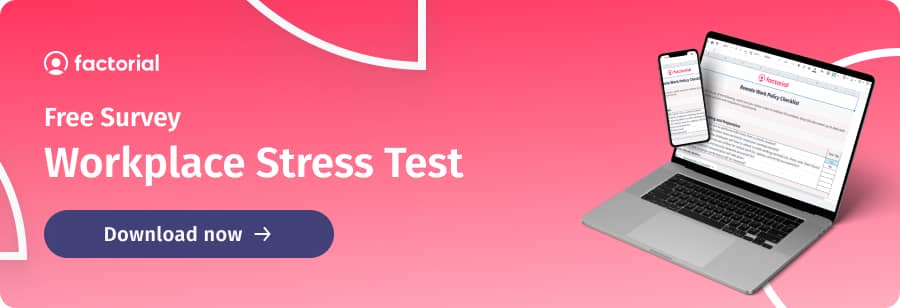Mobbing is basically “bullying on steroids.” It is a kind of group bullying, harassment, and cruelty that occasionally plagues the workplace. Whether it be conscious or unconscious, mobbing should be taken seriously. It can undermine the confidence of targeted employees, increase turnover rates, and contribute to a toxic work environment.
Research shows that targets are usually those who challenge the status quo. Usually, victims are competent in their position, well-educated, resilient, outspoken, empathetic, and often considered to be physically attractive. Individuals who suffer from mobbing are also more likely to be women aged 32 to 55 and/or members of a minority group.
As this profile description reveals, mobbing goes hand in hand with workplace discrimination and diversity, equity, and inclusion. In this article, you will find out more about how to recognize and combat mobbing in the workplace.
TABLE OF CONTENTS
- Where does mobbing come from?
- Are people trying to stop it?
- What can you do about mobbing?
- Video: Workplace bullying: Mobbing
- What’s the verdict?
- Keep track of employee happiness with HR survey software 🚀
What is mobbing?
As mentioned before, mobbing, like the word “mob” refers to a form of group bullying in which individuals are isolated and targeted. This form of harassment is most commonly found in the workplace. According to a recent study, 79.3 million US workers were affected by workplace bullying in 2021. Some of the most common forms of mobbing in the workplace include:
- Gossip and rumors: One of the most common ways that mobbing at work is found through gossip.
- Relational aggression: Relational aggression occurs when multiple coworkers are pitted together against a targeted employee. Usually, there is a group leader that plays a more active role in isolating and targeting the victim.
- Verbal aggression: Verbal aggression may take the form of sarcasm, passive-aggressive insults, and/or hostile tones of voice, just to name a few.
Where does mobbing come from?
The practice is not new. There is research that examines evidence of workplace mobbing in the 1940s. At that time, they used the term “rate-buster” to describe the group leader.
Often, high productivity led to cuts in their unit’s bonus rate. As a result, workers would agree to only produce to a certain level in order to avoid the cuts. However, this did not always go as planned. Sometimes top performers refused to be held back by the group decision.
Although these so-called “rate busters” were just trying to work their way around dysfunctional wage incentives, the ends often did not justify the means. They frequently resorted to harassment, threats, and sometimes physical harm to force their co-workers to conform to their planned underperformance.
The consequences of mobbing
The results of mobbing can be devastating. Low job satisfaction, reduced employee engagement, high workplace conflict, and high turnover frequently plague organizations with incidents of harassment and mobbing. Consequences to the organization can also be severe. The loss of talent, toxic workplace cultures, low employee performance, and the potential for costly litigation are all feasible outcomes.
Perhaps an even more damaging, workplace mobbing impacts the organization’s efforts toward diversity and inclusion. Targets of mobbing tend to be competent high performers, women, people of color, and individuals who are seen as “different”.
HR has an extremely important role to play and a responsibility to maintain a workplace free of bullying. Not only is it an obligation for HR, but it makes for a much more productive and enjoyable place to work when these behaviors can be prevented or stopped as soon as they are reported. Employees will feel more valued and respected when they know that their employer is committed to providing a safe and professional environment for their workers. Now, how can you start curing this?
Are people trying to stop it?
Most countries do have laws against workplace bullying. For example, in the United States, there are projects like The Healthy Workplace Bill to try and protect the employees.
Or in Spain, in terms of Workplace Bullying or Mobbing, they have the Law on Prevention of Occupational Risks, which emphasizes the principles of preventive action at a general level. In most countries around the world, there are policies that work with the same requirements.
The problem is that even though we have laws protecting against these toxic actions, most times it is not enough. Unfortunately, HR departments may go unaware of warning signals and the problems caused by workplace bullying.
What can you do about mobbing?
In order to prevent mobbing at work, it’s important to know exactly where and how to take action. You can start by adopting some of the principles outlined in this list, “The four B’s of Bullying”:
Be specific
It is essential to adopt formal policies to prohibit workplace mobbing. While HR policies often pertain to harassment, they often do not cover details about group and peer harassment.
It is important to be specific and include policies about group bullying or mobbing that targets diverse employees. Although this will not eliminate the problem from existing, this is a fundamental first step for organizations. It is comparable to how specific laws in some countries are developed to address hate crimes.
Be careful
It is imperative to recognize that workplace mobbing and bullying increase in highly competitive workplaces, especially when resources are limited. Management strategies that pit employees against each other to prove their own value can make peers feel threatened by high performers and cause them to engage in group bullying for their own self-preservation.
Diverse high performers stand out in the workplace and can become easy targets of workplace mobbing. Facilitating inclusive workplaces in which there is collaboration, peer mentoring, and a balance between group and individual rewards are effective ways to offset and perhaps prevent workplace mobbing, particularly the kind that targets diverse employees.
Be proactive
In order to build inclusive organizations that resist group bullying, it is necessary to have proactive, engaged, and socially responsible leaders.
Examine your own behavior to ensure that you are setting a good example. Leaders must learn, pay attention to and respond to signs that workplace mobbing is taking place — especially behaviors that target women and other minority groups.
Leaders must not fall for rumors or hearsay that reframe top diverse talent as a “troublemaker,” “not a team player,” “uncooperative” or “just out for themselves.” Leaders must also not remain silent when they receive frequent complaints of micro-aggressions toward top performers. How a leader responds (or fails to respond) to these incidences and behaviors sends a powerful sign to other employees.
Be a Hero
As cheesy or cliché as this may sound, it’s the hardest one for a lot of people. Do not stay silent if you experience bullying or see it. Remember, when someone exhibits bullying behavior and gets away with it, it reinforces the behavior. Also, designate points of contact or trustworthy helpers, so employees know where to turn for help when the time comes.
Remember, you are a role model who can influence others, like it or not. Talk to employees and ask open-ended questions about the work environment, atmosphere, and how things are going. Do the same with supervisors. Encourage open communication and a willingness to intervene when needed. Everyone can be a hero.
By the way, if you want to know more strategies for managing bullies out of your business, we recommend the book The Bully-Proof Workplace: Essential Strategies, Tips, and Scripts for Dealing with the Office Sociopath. It’s very recent and it has a lot of helpful information.
What's the verdict?
Basically, all leaders should treat workplace mobbing for what it is: “slow poison” for inclusive organizations. Leaders of inclusive organizations must proactively address the rise of workplace mobbing to retain diverse talent. By the way, the startup phase is a huge opportunity for businesses to build a culture of wellness from the very beginning. In the early phase, employees should still feel supported in regard to their physical, mental, and emotional health. And remember, workplaces will be workplaces.
In most cases, you have a lot of different personalities thrown into one cauldron during working hours. Drama, gossip, power struggles, and office politics are often inevitable, at least to some extent. Although it might be difficult for bullies to see why they are wrong, it is possible to take a stand against their harmful behavior and create a more positive workplace culture for everyone.




